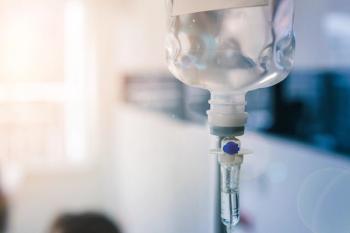
Anonymous Cell Phone Metadata May Show Changes in Behavior Associated With Flu-Like Illness
On average, those who received a flu-like diagnosis changed their cell phone usage behavior 1 day before their diagnosis and the 2 to 4 days afterward.
Routinely collected cell phone data may be able to reveal behavioral changes in individuals diagnosed with a flu-like illness while maintaining their anonymity, according to a new study published in Proceedings of the National Academy of Sciences. The study used data drawn from a 2009 outbreak of H1N1 flu in Iceland.
The investigators collaborated with a major cell phone service provider in Iceland, along with the nation’s public health officials. Data was analyzed from more than 90,000 encrypted cell phone numbers, representing approximately one-quarter of Iceland's population. This encrypted metadata was linked to 1400 anonymous individuals who received a clinical diagnosis of a flu-like illness during the H1N1 outbreak.
“The individual linkage is key,” said Ymir Vigfusson, assistant professor in Emory University's Department of Computer Science, in a press release. “Many public health applications for smartphone data have emerged during the COVID-19 pandemic but tend to be based around correlations. In contrast, we can definitively measure the differences in routine behavior between the diagnosed group and the rest of the population.”
According to the investigators, the study demonstrated that, on average, those who received a flu-like diagnosis changed their cell phone usage behavior 1 day before their diagnosis and the 2 to 4 days afterward. These individuals made fewer calls from fewer unique locations and spent more time on the calls that they made on the day following their diagnosis.
“To our knowledge, our project is the first major, rigorous study to individually link passively-collected cell phone metadata with actual public health data,” Vigfusson said in the release. “We've shown that it's possible to do so without comprising privacy and that our method could potentially provide a useful tool to help monitor and control infectious disease outbreaks.”
The investigators emphasize that this study represents only a first step for the possible broader use of the method. Iceland, the environment where the study was conducted, is unique in several ways. The island has only one port of entry and a fairly homogenous, affluent, and small population. Further, the study reviewed only a single infectious disease and those who received a diagnosis for flu-like illness.
“The COVID[-19] pandemic has raised awareness of the importance of monitoring and measuring the progression of an infectious disease outbreak, and how it is essentially a race against time,” Vigfusson said in the release. “More people also realize that there will likely be more pandemics during our lifetimes. It is vital to have the right tools to give us the best possible information quickly about the state of an epidemic outbreak.”
REFERENCE
Anonymous cell phone data can quantify behavioral changes for flu-like illnesses [news release]. EurekAlert; January 26, 2021. Accessed July 29, 2021.
Newsletter
Stay informed on drug updates, treatment guidelines, and pharmacy practice trends—subscribe to Pharmacy Times for weekly clinical insights.


















































































































































































































